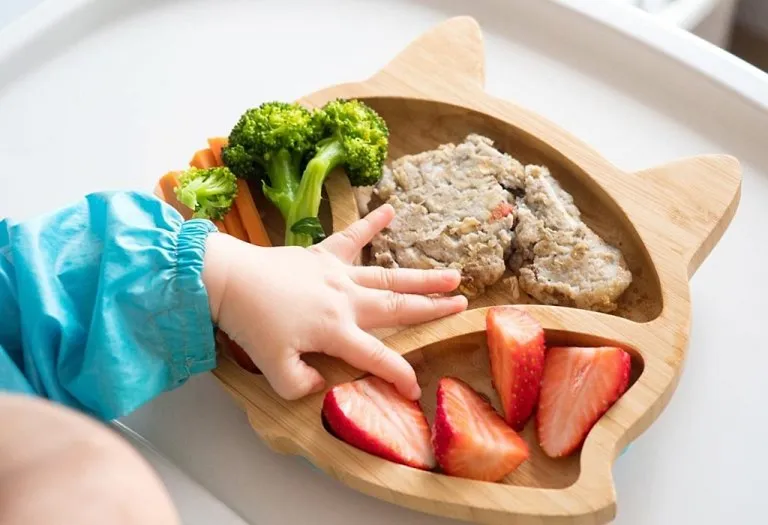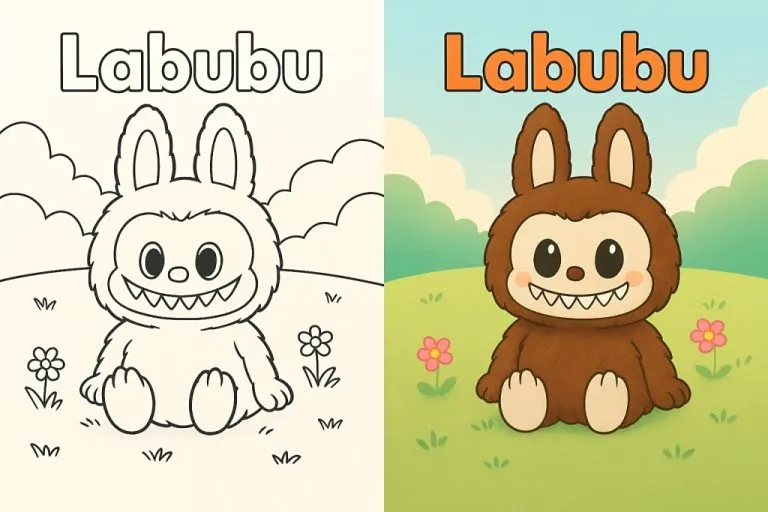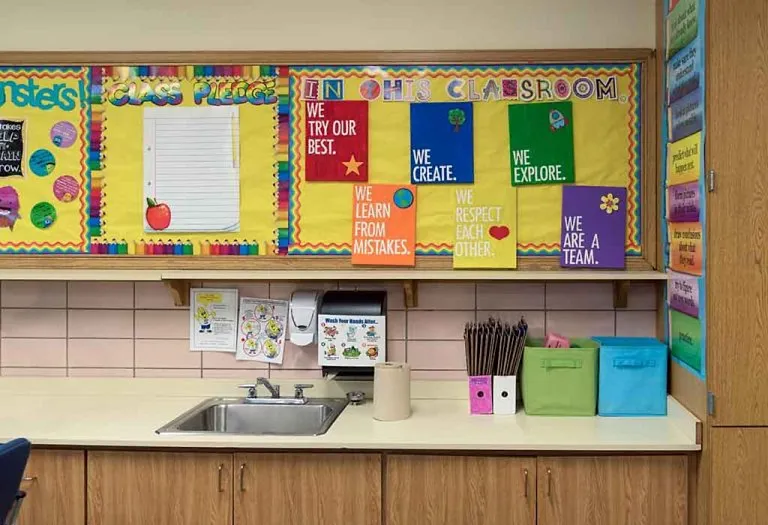Advantages of Weaning Baby
When a baby is born, he remains on her mother’s milk for the first few months of life. As he starts growing, his appetite also starts increasing and requires the introduction of solid foods step-by-step. This gradual transition from breast milk to solid food is known as weaning.
When babies start weaning, they are given different types of foods to develop the taste for new foods. When fed with a spoon or hand, babies also learn to coordinate their lips, jaws, and tongue. It is also a great socializing activity as family members enjoy taking turns in feeding a weaning baby. Read on to learn about the importance of weaning.
Types of Weaning
Here are some common types of weaning that parents may consider:
1. Baby-led Weaning
Baby-led weaning involves letting the baby feed themselves from the start of weaning with finger foods rather than being spoon-fed purees. This method encourages the baby to explore different textures and tastes while developing hand-eye coordination.
2. Traditional Weaning
Traditional weaning involves introducing solid foods through spoon-feeding purees or mashed foods. Parents gradually transition their babies to more textured foods as they become comfortable with eating.
3. Combination Weaning
Combination weaning, or mixed weaning, is a method where parents incorporate both baby-led weaning and traditional spoon-feeding. This approach offers flexibility, allowing babies to experience both self-feeding and being fed by parents.
4. Gradual Weaning
Gradual weaning is a slow and steady approach where breastfeeding or bottle-feeding is gradually reduced as the baby starts to consume more solid foods. This method can be less stressful for both the baby and the parent.
5. Partial Weaning
Partial weaning refers to the process of reducing breastfeeding or bottle-feeding sessions while still maintaining some milk feedings alongside solid foods. This approach can be helpful when transitioning back to work or introducing the baby to other caregivers.
6. Night Weaning
Night weaning involves gradually eliminating nighttime feedings, encouraging the baby to sleep through the night. This can be done once the baby is consuming enough solid foods and daytime milk to meet their nutritional needs.
Advantages of Weaning That You Must Know
Here’s why weaning is important. Weaning is the most important transitional phase for a baby as he starts tasting and eating foods that add nutrients to his body. The need to wean babies generally starts from the age of 6 months and can go on till that of 12 months to 2 years depending on the baby’s intake, and the type of weaning foods and portions. But since his stomach is still very delicate, he needs food which is easy on his digestive system. The foods that parents can start with once a day are cooked and mashed vegetables, soft fruits, and baby cereals mixed with breastmilk or formula.
The importance of weaning a baby at the right time cannot be stressed enough as it is the way to the all-round development.
1. Babies Start Becoming Self-Dependent
As babies grow, they start experimenting with food by trying to eat it themselves, which can be messy. But this promotes better hand-mouth coordination. Thus, it is important to encourage babies to eat on their own.
2. Personality Development
He starts developing his likes and dislikes towards food starting now. This, slowly but eventually, shapes his food choices. Since the baby is now included in mealtimes along with other family members, he gains more confidence and his personality improves.
3. No More Making Special Food
Babies learn to taste different foods apart from milk and food specially prepared for them. You can also include baby versions of your meal in his diet and introduce him to what you are eating. If you don’t feel like preparing a different meal, you can always opt for a meal which is suited to your baby’s delicate appetite.

4. Free Time for Mommy
There is a break from feeding duties, so now the mother can have some time for herself. No routine breastfeeding and breast pumping mean that she has more time to herself. This is the time to get the other parent also actively involved in the baby’s feeding sessions.
5. Balanced Diet
New, nutrient-rich foods mean that your baby has now access to all the nutrients required for growth and development. With breastmilk no longer being the only source of nutrition, your baby’s body can have its share of iron, protein, minerals, etc., from a varied set of food items.
6. Builds Important Developmental Skills
From learning how to coordinate his tongue, lips and jaw movement to chewing and swallowing, babies learn important motor and developmental skills during weaning. They also learn to control hand-eye and hand-mouth coordination as they pick up and eat food on their own.
FAQs
1. Can I start weaning my baby if they have food allergies?
Yes, you can start weaning even if your baby has food allergies, but it’s essential to introduce new foods one at a time and observe for any reactions. Consulting with a pediatrician or allergist before introducing high-risk allergenic foods can help ensure a safe weaning process.
2. How can I make weaning easier for a reluctant eater?
For a reluctant eater, making the weaning process gradual and stress-free is crucial. Offer a variety of textures and flavors, and try to incorporate foods your baby already enjoys. Patience and consistency, without forcing the baby to eat, can make weaning easier.
3. Is it normal for my baby to refuse solid foods during weaning?
Yes, it’s normal for some babies to initially refuse solid foods during weaning. This can be due to teething, illness, or simply a preference for milk. Continue offering solids regularly, and ensure that the environment is calm and positive during mealtimes.
4. How can I prevent constipation during the weaning process?
To prevent constipation during weaning, ensure your baby is getting enough fluids, including water or breast milk, and introduce high-fiber foods like fruits, vegetables, and whole grains. Gradually increasing the variety and amount of solid foods can also help maintain regular bowel movements.
This was all about the importance of weaning food. The benefits of weaning far transcend just the nutritional needs of your baby. It sets the edifice of healthy eating habits, builds food likings, develops social and motor skills, and gives you a break from being the only source of food for your little one.
A happy weaning to all new mothers and babies out there!
References/Resources:
1. Weaning; CDC Nutrition; https://www.cdc.gov/nutrition/infantandtoddlernutrition/breastfeeding/weaning.html
2. What is weaning and how do I do it?; NIH; https://www.nichd.nih.gov/health/topics/breastfeeding/conditioninfo/weaning
3. Weaning Your Child; Nemours Kids Health; https://kidshealth.org/en/parents/weaning.html
4. Weaning from the breast (Paediatrics & Child Health); National Library of Medicine; https://www.ncbi.nlm.nih.gov/pmc/articles/PMC2720507/; April 2004
5. How to start weaning your baby; NHS; https://www.nhs.uk/start-for-life/baby/weaning/how-to-start-weaning-your-baby/
6. Weaning Your Baby; American Academy of Pediatrics; https://www.healthychildren.org/English/ages-stages/baby/breastfeeding/Pages/Weaning-Your-Baby.aspx
7. Baby care – weaning; Better Health Channel; https://www.betterhealth.vic.gov.au/health/healthyliving/baby-care-weaning
Baby Self-Weaning
When & How to Wean a Premature Baby?
Bottle Weaning: How and When to Start?
Early Weaning from Breastfeeding
Was This Article Helpful?
Parenting is a huge responsibility, for you as a caregiver, but also for us as a parenting content platform. We understand that and take our responsibility of creating credible content seriously. FirstCry Parenting articles are written and published only after extensive research using factually sound references to deliver quality content that is accurate, validated by experts, and completely reliable. To understand how we go about creating content that is credible, read our editorial policy here.























